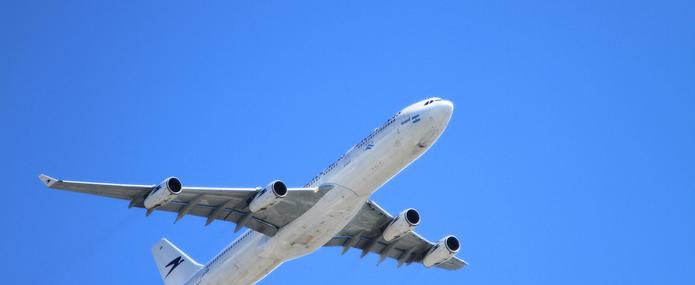Carbon neutrality, a common objective of France and the United Kingdom by 2050, requires a major transformation of societies, thereby challenging technological systems and the economy as a whole. It implies that each sector must reduce its emissions, and also question lifestyles and behaviours; these often less explored dimensions are the subject of this report, complementary to the vision of neutrality published in spring 2019 by the CCC. Several sectors are analysed (housing, transport, food) in order to identify possible changes and the levers to be mobilised. This post focuses on the issue of aviation, which is both a subject of debate (discussions on the exemption of kerosene tax in France during the Yellow Vests crisis, the impact of the "flygskam" movement in Sweden) and a sector that is both very difficult to decarbonise and strongly linked to lifestyles.
Observations, state of play and proposal in the United Kingdom
Growth in passenger numbers, distances travelled, number of flights, and airports planning to expand: many indicators point to a growing aviation sector (Carmichael, 2019). If air travel now accounts for 12% of a British household's emissions, it could account for 22% in 2030. And if the CCC, in its neutral scenario, allows a 25% increase in demand over today, this increase could be higher (Carmichael, 2019), thereby weakening the ability to meet emission reduction targets. How to act and avoid this risk?
The proposal contained in the report submitted to the CCC, resulting from the "A Free Ride" initiative, is based on this observation: 70% of British flights are carried out by 15% of the UK population, and half the population does not fly. In addition, business flights are in long-term decline and account for only 12% of flights to foreign countries. The challenge is therefore not to reduce air travel for all British people, but for a minority that flies a lot, and thus to restore a form of equity.
Today, there is a tax on each ticket in the United Kingdom: £13 for short- and medium-haul flights (<2,000 miles) and and £78 for long-haul flights in economy class; £26 and £172 for higher class flights. In comparison, the French solidarity tax on airline tickets is much lower, even with the increase voted recently,
as is the German tax.

Considering that it is unfair to tax at the same level one person's only flight of the year and the 10th of another, the proposal is that one trip per year would not be taxed, and that then the level of tax applied would increase significantly with the number of flights.
Part of the revenue would be directed towards investment in R&D to decarbonise aviation.
This proposal has the advantage of placing at the core of the discussion the issues of equity and coherence of public action by seeking to deliver a convincing message on the sharing of efforts among citizens. These elements are identified as central by the report with the objective of "involving" citizens in the action.
Complementary approaches
It is worth recalling that to date, there are no clear prospects in terms of technological solutions:
electrification is currently not viable for aviation, the (marginal) use of first-generation biofuels is criticised for its environmental impact, and the production of synthetic fuel from electricity would require huge quantities of renewable energy, potentially beyond the reach of the European continent.
Other examples broaden the scope of possible actions to reduce aviation emissions. Beyond the incentive tax, the "flygskam" movement in Sweden, taken seriously by airline companies, shows that social and moral incentives can be mobilised by some citizens who have decided to stop flying
in order to change the attractiveness of this mode of transport. In addition, in Germany and Austria, a railway company is showing that it is possible to revive the night train and ensure its viability; at the same time, many night train lines have disappeared in recent years in Europe, particularly in France. This helps to raise the question of the place and role of night trains in the future of transnational mobility, and therefore alternatives to air travel, in a context where, at EU level, neither the Commission nor most Member States see their preservation as an objective
and where the example of Eurostar tends to show that having an efficient Paris-London rail link has not prevented the growth of air traffic between France and the United Kingdom,
as it also occurs region by region.
In the perspective of future discussions, it is certainly by combining these approaches—citizen movements, supply policy, incentive taxation, R&D—that we can progress and nurture a collective commitment to neutrality.



